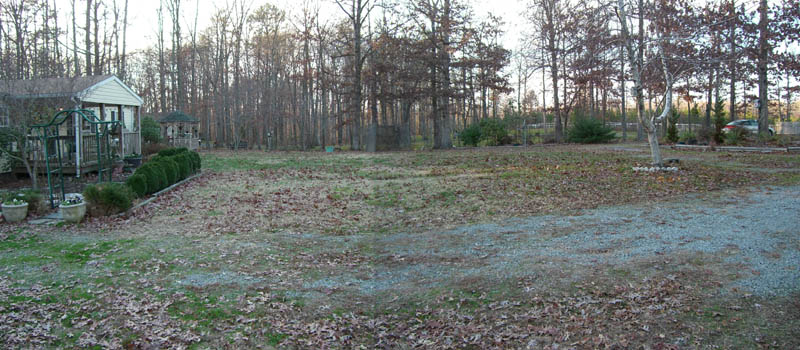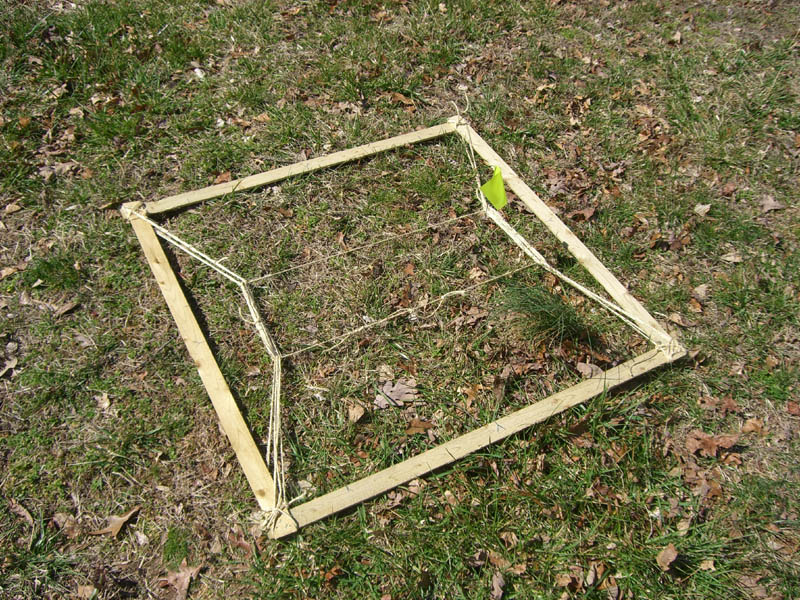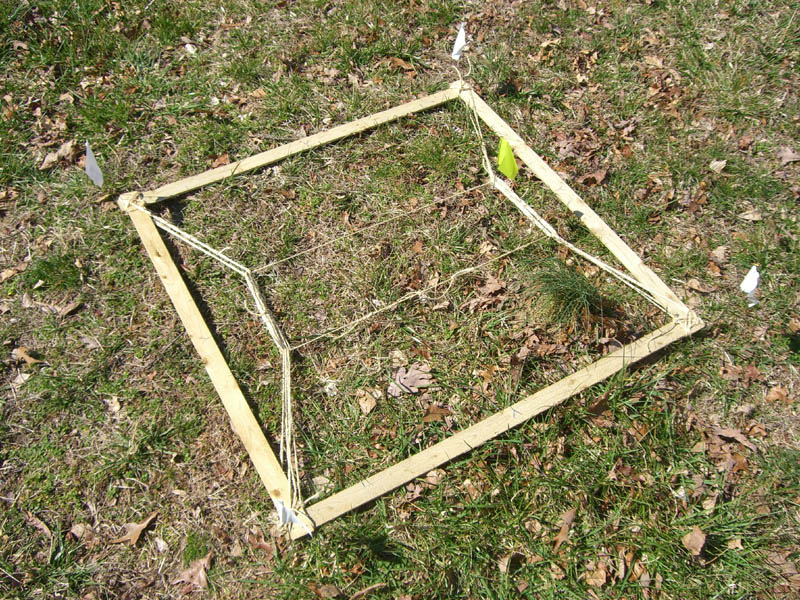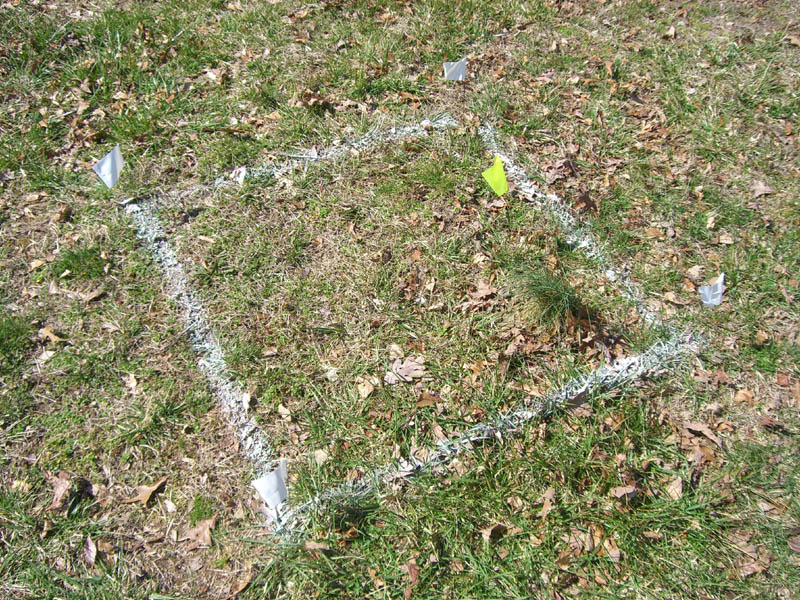So, where are we going to put this thing?
Another thing you kind of need to figure out is where your house is going to go. As it happens,
there was a spot on the existing property that is clear of trees, mostly level, easily accessible,
and ideal for building: The Front Yard!

In order to properly lay out the foundation of the house and dig into the ground accurately,
you need to set up "batter boards". These are wooden rails at each corner of the house, set
up so that if you stretch a string across pairs of rails, the strings will show you where the
walls of the house will be. The strings will cross where the corners of the house will be. And
if you are paying attention (as you should be!) when setting up the batter boards, all of the
horizontal pieces of wood over which you hang the strings will be exactly level with each other,
establishing a level plane in the air, regardless of how much the land itself slopes.
Since the levels of the bottoms of the cement footers that make up the foundation have to all
be level with each other, the depth of foundation excavation has to be measured from the same
level plane. Since the batter boards establish such a plane, they are the basis on which the
foundation is measured and dug. The corners of the house are marked by the crossings of the strings
and the foundation's location is quite solidly related to the locations of the corners of the
house. So once the batter boards are set up, the details about the house are pretty well established.
Setting up the batter boards, though, is a detailed and slow task. First you dig holes to set
up your vertical posts, on which the horizontal batter boards will rest. Then you need a level
- preferably a laser level, since they're easiest to use - so that you can mark on all the verticals
where a spot is that is exactly level with all the other marks. This establishes a level plane, and
you can start to figure out where the walls will go. Tie a taut string between each poopsite pair
of batterboards, but make sure it can slide back and forth on the board. This will allow for small
adjustments in string position so you can make sure everything is just right. Each angle has to be
exactly 90 degrees. If all you have is a tape measure, that can be a little bit slow.... you
need, in the end, to check that all four sides of your house are the right length (in our case,
that's just a square 30 feet on a side), that the diagonals across the interior are the right
(and the same!) length, and that, just to double-check, each corner can support a 3-4-5 triangle.
(That is to say, if from every corner where the strings intersect, you measure 3 feet along one
string and 4 feet along another, then the hypotenuse between them should be 5 feet.)

You can see a couple spikes in the ground with orange marking tape - those are short pieces of
rebar that I put in the ground to mark where the 4 corners of the house would be.
With the batter boards in place, it was time to measure the location of every footer I was going
to need. This house's plans call for a grid of 19 footers, each one in the shape of a square-based
pyramid about three feet on a side, and about four feet tall. This is subject to some alteration
based on how much the land slopes, since the following three rules must be followed:
The bottom of each footer must be level with the bottom of every other footer
The bottom of each footer must be at least 6 inches deeper than the frost line
The top of each footer must be at least 18 inches above the dirt
What this means is that if frost line where you are building is 12 inches, and there is a slope
such that the land at one corner of your house is 12 inches higher up than at the other corner,
your footers will need to go from 18 inches below the lowest corner, to 18 inches above the
highest corner. That makes for a 48-inch tall footer.
Once the batter boards were established, I measured out the locations of the rebar spikes that will
poke out of the top of each cement footer. The top of each footer will be a rectangle 8"x24", and
the rebar will poke out 4" in and 4" over from one corner of that rectangle. So, first, I marked the
rebar locations with yellow flags:

Next, I built a mock-up of the top-down view of one of these footers: a three-foot square with a
8"x24" rectangle in the middle, and diagonal lines connecting corresponding corners. I laid that
down over the flag marking the rebar spike, and positioned the mock-up so that the flag emerged
right where the rebar would be positioned in the real deal:

I planted little white flags at each corner, since I only made one mock-up...

...and then spraypainted the outline, so that the excavator will be able to see it when he comes
to dig the holes for the foundation.

Racking up the logs...
Back to the beginning...





